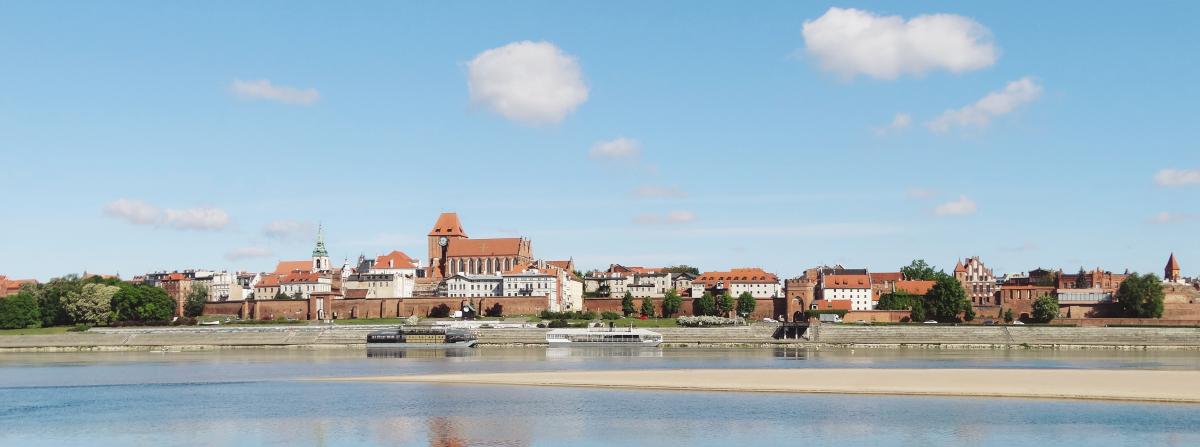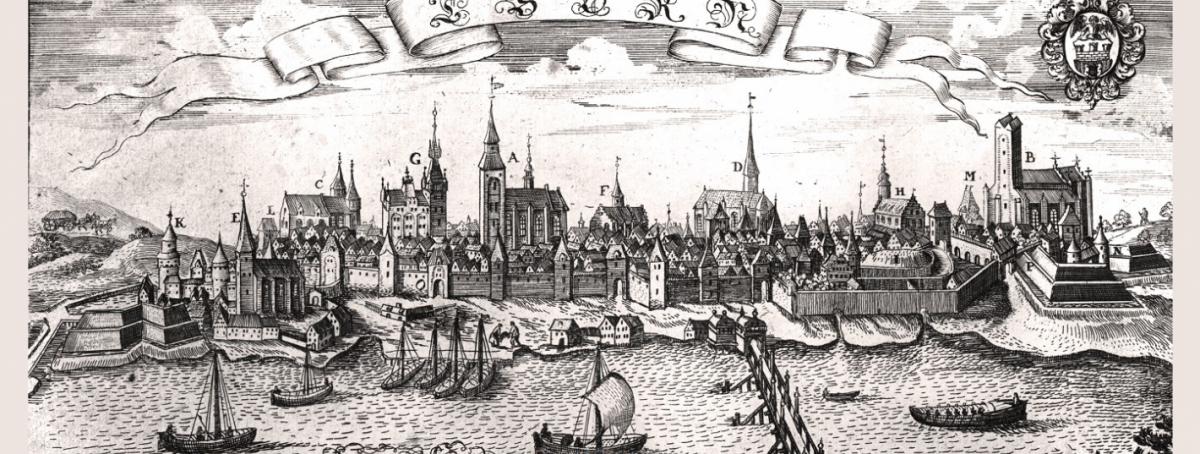Toruń as a part of Hansa

What was the Hanseatic League? This is a question that is difficult to answer fully and concisely at the same time. For the merchant ruler of the seas escapes strict definitional frameworks, appearing rather as one of a kind. By reducing this phenomenon to an encyclopaedic buzzword, it is easy to lose the complexity and uniqueness of a creation that successfully lasted and developed for more than four centuries. Let us therefore call it a merchant association, giving ourselves time and space to develop this thought.
The very beginnings of the Hanseatic League require a broader context. Let us move to the second half of the 11th century and look at the bustling city of Visby. This town on Gotland is still famous for its trading past and relics of its former power. Merchants from the Baltic outpost saw the trade potential that lay to the east and thus paved the way to Novgorod, which was soon to become the axis around which the trade of this part of the continent was organized. Before this could happen, however, Lübeck had to be born. A glance at the place where the Trave River enters the Baltic Sea is enough to realize that this area was a perfect place to establish a center which would not only join the maritime economy but also control the land routes connecting the Baltic and North Sea coasts. In 1241 the merchants of Lübeck concluded a treaty with the merchants of Hamburg, which is considered by some historians to be the "founding act" of the Hanseatic League. Under the agreement, the Lübeck and Hamburg merchants mutually guaranteed each other security on the routes they controlled. Soon, other centers joined the structure thus built.
The Hanseatic League communicated through congresses, to which individual cities sent their delegates equipped with detailed instructions. Thus, both all-union congresses were organized in Lübeck, as well as regional ones - in individual Hanseatic quarters. It is also worth mentioning that the elites of the Hanseatic cities were families related to each other, so the community was a kind of a really big family.
In the first half of the 13th century the building of the Teutonic Knights' power in Chełmno land began, and later the expansion in Prussia and Livonia. The creation of the state found expression in the founding of numerous cities, including - already at the very beginning - Toruń and Chełmno. The transformations occurring in the region did not escape the attention of merchants who recognized the potential of the emerging centers. Thus, already in 1280, less than five decades after its establishment, the Old Town of Toruń became a member of the Hansa. Chełmno, Elbląg, Braniewo and Riga were also members of the Association. In the second half of the 14th century Gdańsk also became a member of the Hansa.
If one were to summarize the activities of the Union in the shortest possible terms, one would have to say that it was all about the exchange of goods between east and west and north and south. Individual regions produced goods that were in short supply in others. The merchants of the Hanseatic League, on the other hand, wanted to monopolize the intermediation in this area, preventing competitors from exchanging goods. They also played on the independence of individual regions, so that they were dependent not only on supplies, but also on the receipt of goods by the Hanseatic League. What was traded? The north of the continent supplied fish. So herring was brought from Skanor and Falsterbo and stockfish, i.e. dried cod, from Norway. From the Russian lands came wax and animal furs, from the west - more precisely from Flanders - excellent quality cloth. Copper was imported from Upper Hungary, i.e. today's Slovakia. An important supplier of wood and its derivatives such as tar, ash, and tar pitch was Mazovia. Cloth was the basis of the clothing industry, fish was used on fasting tables, wood and its products were used in boatbuilding, while furs supplied the furrier's trade in practically the whole western Europe, including such centers as London and Paris. In order to better understand the scale of the trade we were dealing with, it suffices to mention that in the summer of 1384 alone, more than 370 thousand squirrel furs were shipped to London, while the volume of raw material brought by non-Hanseatic merchants amounted to only 10 thousand pieces.
Among the cities of the Hanseatic League, the most important was Lübeck, referred to as its "head". In addition to the centers already mentioned, it is worth mentioning Lüneburg, Greifswald, Szczecin, Kołobrzeg, Królewiec, Revel (Tallinn), but also Cologne, Wrocław, and Cracow, located far inland. In total, there are more than one hundred and sixty centers, although their number varied in different periods. Among the cities important to the Hanseatic League but not members of it, London, Bruges, Bergen, and Novgorod should be mentioned. In the latter there were cantors, that is, outposts extending into the territory of the countries with which exchange was carried out. Thus the Bergen Cantor was the gateway through which grain flowed into Norway and dried codfish flowed out. The London Steelyard, as the local office was called, imported Russian furs and exported wool and cloth. The Cantor in Novgorod received Western goods, circulating the aforementioned furs, while Bruges served as a depot for top-class cloth.
After hundreds of years of dominance, the Hanseatic League gave way under the pressure of several unfavorable circumstances, among them the rise of Dutch merchants. Four centuries of great adventure, however, resulted in a community of language, culture and customs. The monumental brick buildings of churches and town halls can still be found throughout the area. There are also magnificent granaries and similar, although differing from each other, burgher houses. The only word in the English language which indirectly comes from our land also reminds us of the times when the Hanseatic cogs and holk ships ruled indivisibly on the Baltic and the North Sea basin. The word Spruce is a reminder that large consignments of wood going west were imported "from Prussia" (z Prus in Polish), an area that was part of the commercial and cultural community created by merchants of the Hanseatic League.

Toruń in XVII century
Toruń's participation in the Hanseatic League was particularly active. Vessels loaded with Flemish cloth called at the local port, and Toruń merchants traded Ruthenian wax and Masovian wood. They also traded in furs and Hungarian copper. The inhabitants of Toruń were the elders of the Bruges cantor, as well as the mayors of the herring fisheries in Skåne. In the years 1358-1403 representatives of Toruń took part in 40 out of 48 meetings of the Hanseatic League. Therefore, it should not come as a surprise that to this day there is no shortage of memorabilia of the lively commercial contacts of the former inhabitants of Toruń.
Artur Dobiegała
